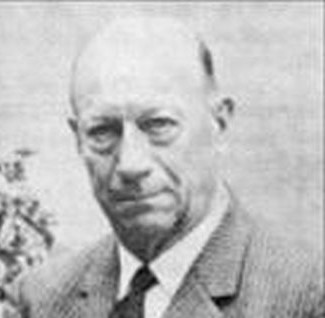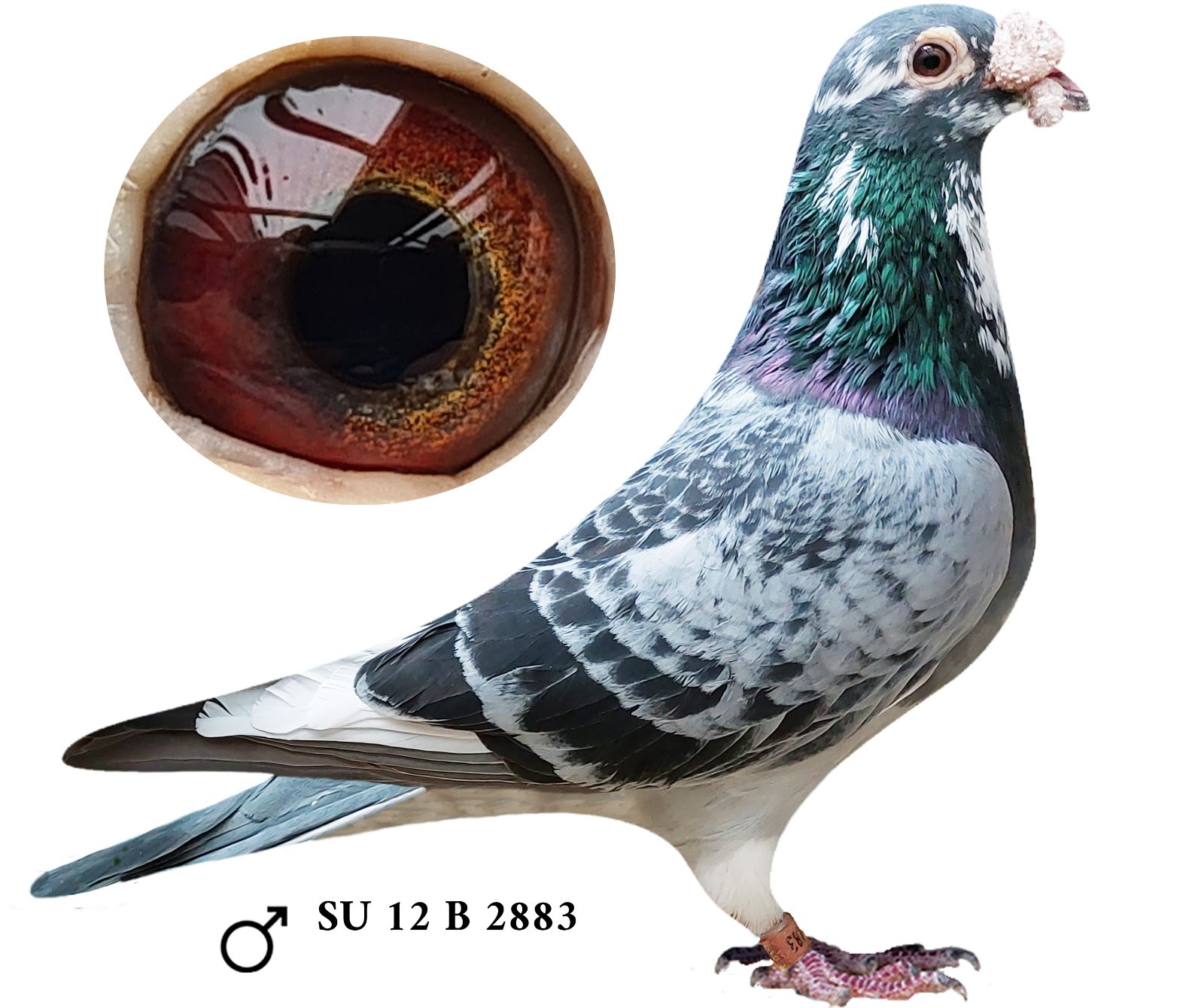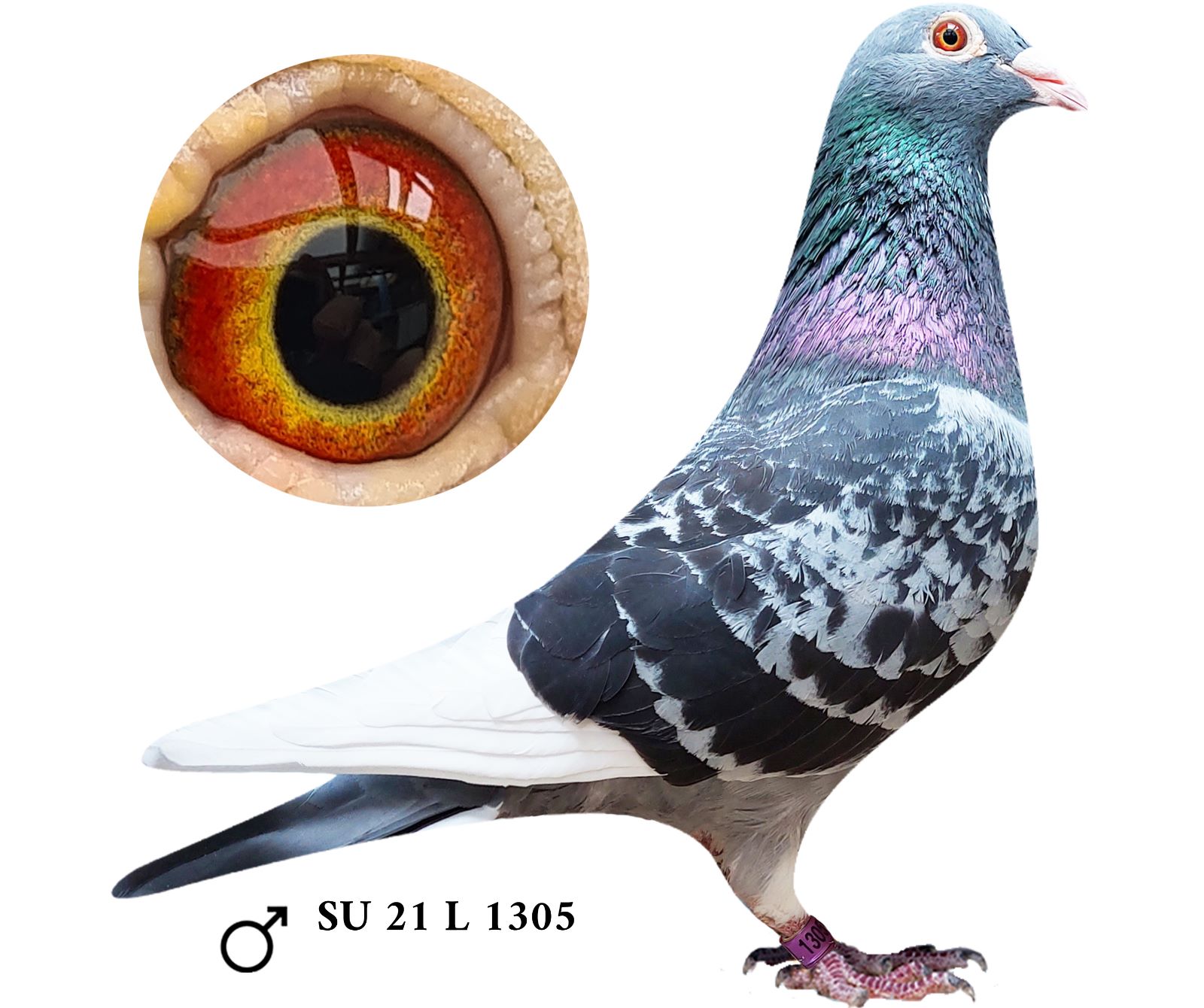
The Delbar Strain
The Delbar Strain

Video Story
The Delbar Strain
From the French speaking part of Belgium, is the little town of Ronse, home to one of the most famous racing pigeon fanciers of the 20th Century, his name was Maurice Delbar.
The famous Delbar strain name which we know of today, derives mainly from Maurice Delbar, who succeeded his famous father Oscar in the sport, and even before the carnage of the First World War the name was a noted flyer amongst the European pigeon racing fraternity.
He had an unbeatable long distance strain that had achieved great results and that were the equal of those of Bricoux and Duray. His family of pigeons had reaped numerous wins at distances of between 400 and 700 miles, especially for a period of approximately 20 years after the war ended as the family went on to further glory.
His strain was a master of the Pyrenees races, in the race home his birds kept at the head of the race, and never was the sport so overwhelmed by a single lofts results between 1935 and 1940. His main competitors were champions with his pigeons, breeding pure or crossed – the likes of Berlengee, Dath, Delvinquiere, Dusarduyn etc. they all used Delbars own bird’s to compete with him.
The Delbar breed is so rich in pure class that it crosses out well with lots of other breeds. Discovered in the Netherlands and Germany with Janssens after the war. In fact, during the Thirties and Forties, most fanciers heard only of the Delbars, the Hansennes and the Putmans in that order as being the major sources of pigeon racing success.

A key factor of their success was the crossing of some birds into the family from a Mr. De Peeters loft from Puttee, not far from Mechelin. Thus lay the basis of the strain: the pre-war Delbar family and the post- war input from the De Peeters. It must be stated, however, that the crosses into the Delbars were few at this time. However, upon its arrival, the crossed Delbar/De Peeter strain took the pigeon racing world by storm, and success flourished not only for the master himself but for hundreds of disciples from throughout the whole of the pigeon sport.
In 1937, Delbar won the Barcelona marathon and approximately 10 years later, in 1948, the Barcelona race was won by a 100 percent Delbar raced by the famous Berlengee. Numerous other fanciers throughout the planet won other distance, and indeed, shorter races.
What is little known about Maurice Delbar is that he kept an exceptional family of grizzles. The descendants of his “Golden Grizzles” made many a Belgian and German fancier famous after World War 2. During the years of his fame, the entire world knew of his world champion flyer “Little Chequer”.
Born in the year 1932, “Little Chequer” dominated the National Saint Vincent races. He placed an amazing 2 1st National plus 2nd, 3rd, 4th, and 10th National during his racing career. A better racing pigeon probably has never existed.
Around this same time, Mister Delbar purchased a grizzle hen from an unknown fancier in his area and in 1934 bred the “Little Chequer” with “The Grizzle Hen”. Descendants of this pairing, later to be known as the “Delbar Grizzles”, turned out to be exceptional racers and breeders for many famous flyers. One example is the “Super Grizzle” cock of Hector Berlengee. This cock won 14 times in the top 100 when entered in National races of between 450 to 600 miles. The “Super Grizzle” was 100 percent pure Delbar Grizzle.

It is understood in Germany, that the “Golden Grizzle” Hen purchased by Thomas Peeters carried the Delbar Grizzle in her veins. This famous stock hen is considered by many to be the worlds best breeding hen. One of her direct sons was the Champion “Barcelona” bred by Peeters. This famous cock, born in 1970 won 1st National Saint Vincent twice, flying a race distance of more than 560 miles.
Peeters’ key stock bird, “Korte Bek” Belgium 1975, is a grandson of the “Golden Grizzle” Hen as is the “Kleine Molenaar”, 1st National Ace Pigeon Long Distance in 1977 and 3rd National Ace pigeon Long Distance 1980. The strength of these Delbar grizzles can be seen even in Jos Thones last big champion, (1st Provincial Ace Pigeon K B D B), which is also of this family.
Maurice Delbar kept good relations with some German businessmen like Mister Carl Goschalla, Mister Kreutz, Mister Holland, as well as many others, and these men were able to purchase children of the key breeders and champion racers from Mister Delbar, especially the Golden grizzle Delbars. These Golden grizzle Delbars are still today winning very good national prizes especially from Barcelona and Marseilles. In Germany, it was found that the Golden grizzle Delbars crossed well with the Janssen, Meuleman, Grondelaers and the Hofkens birds.
The Golden grizzles are also excelling at the shorter distance races on the Southeast and East race courses out of Austria and Poland. These are headwind courses are very dangerous for the birds because of the many miles of mountains, forest, and the many hawks and falcons to be found there.
Some of the well-known southeast release points are: Vienna, Saint Poelten, Linz, and Komarno. The east course into Poland has the release points of Posen, Goerlitz, Sulecin, and Krakow etc. These Delbar based birds are bred to race over tough terrain and win! These “East Course” birds are of small to medium size, not heavy in the hand!
We should also acknowledge that the Jan Aarden dynasty was based upon a number of Delbar pigeons amongst others, and that the Delbar strain has influenced other modern pigeon racing strains such as the Jos Thones.

In fact, Piet de Weerd had supplied Aarden with a Delbar which lay at the base of the latters strain. As for the successful grizzles of the Thone strain, many contained Delbar genes. Delbar eventually brought in many crosses but his strain through his husbandry remained phenotypical and it was a strain that many fanciers could identify very accurately as being the work of the artist of Ronse. The Delbar breed of pigeons has fired the imaginations of countless fanciers throughout the world, those who have raced and been successful with representatives of the Delbar family.




























